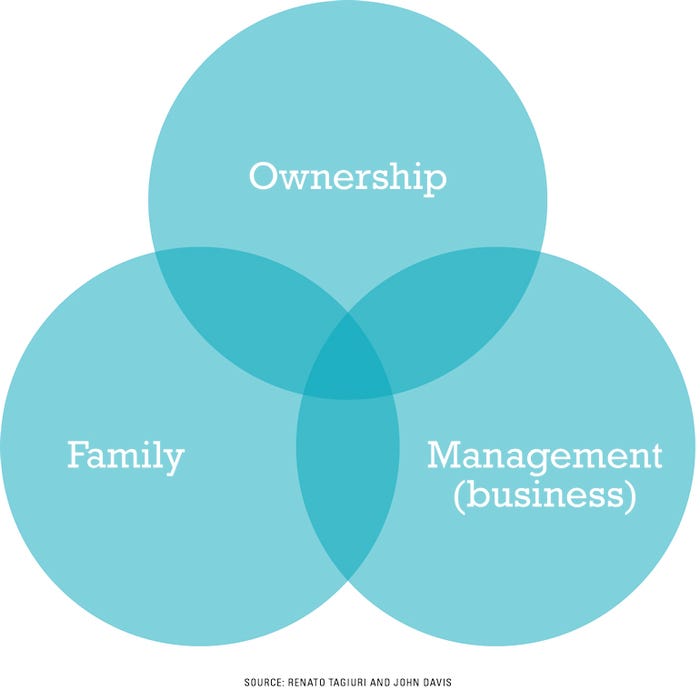July 8, 2022

Family-owned-and-operated businesses can be the most rewarding because you work alongside those you love — your family.
However, by their very nature, family businesses also are the most challenging. That’s because people involved in this type of operation are typically forced to wear many hats. Keeping family roles and business roles separate can be difficult.
Map business roles
In 1978, Renato Tagiuri and John Davis of the Harvard Business School drew three separate, but overlapping, circles to diagram how three groups constitute the family business system: family members, individuals who own the business, and individuals who contribute management or labor to the business.
Each circle requires its participants to accept certain roles and responsibilities, or in farm terms, wear certain hats.
Many farm families have not always viewed their businesses as having the three distinct circles. Instead, they assumed that all family members should take family, business operations and ownership roles.
But in reality, some family members may have their own unique goals and aspirations. They may choose not to work in the family business. Some may prefer to not even own part of the family farm.
When a family member does fit in multiple circles, he or she can struggle to juggle the varying family and business roles.

Manage crossover roles
Too often, those who run their own businesses allow family roles to dictate how they operate. I recall a story from Dick Wittman, who works with farm succession planning for Wittman Consulting, of a mom running the family business with her two sons. One son refused to work with others, and instead always caused conflict.
Someone recommended the mom conduct a performance appraisal of her son, who wasn’t meeting expectations. She put thought into the review and identified areas where the son could improve. After reading the review, the son wadded it up, threw it in the trash and went back to work.
Dick asked the son how the situation would be different if he had been working for the local co-op, not his mother. He replied, “I probably would have been fired.”
At this point, Dick explained that the son was part of the family business management or labor circle and could still be fired if performance did not meet expectations. More importantly, Mom realized for the first time that she had the authority to terminate her son’s job. Mom and son relationships were interfering with those of the CEO and employee.
Choose the right hat
The most well-run family businesses treat the three circles as separate groups. Family members who assume management or ownership roles should view those roles independently of their family roles.
Consider one more example. Assume you’ve farmed with your brother for 30 years. You raise the row crops and maintain the machinery. He manages the livestock enterprise and markets the grain. You jointly own everything 50-50, and you work well together.
One day, your brother announces his intent to retire. He says that after a lot of pressure from he and his wife, his son has finally agreed to stop touring with his band and come home to take over his father’s side of the farm business.
Your nephew is obviously in your family circle, but a family tie alone should not guarantee a right to be part of the business ownership and management circles. In this scenario, the decision-maker should hire a new livestock and grain marketing manager who has the appropriate qualifications.
The lesson here is this: Don’t wear your family hat to make business decisions. You may have overlap as individuals fill roles in different circles. However, you can best protect your family and business by viewing each circle as separate and unique. Doing so will help to reduce conflict and improve the chances of having a successful family business — and a successful family.
Tucker is a University of Missouri Extension ag business specialist and succession planner. He can be reached at [email protected] or 417-326-4916.
You May Also Like




